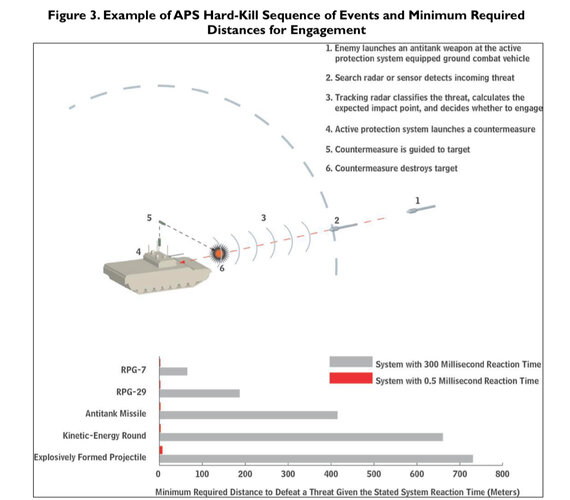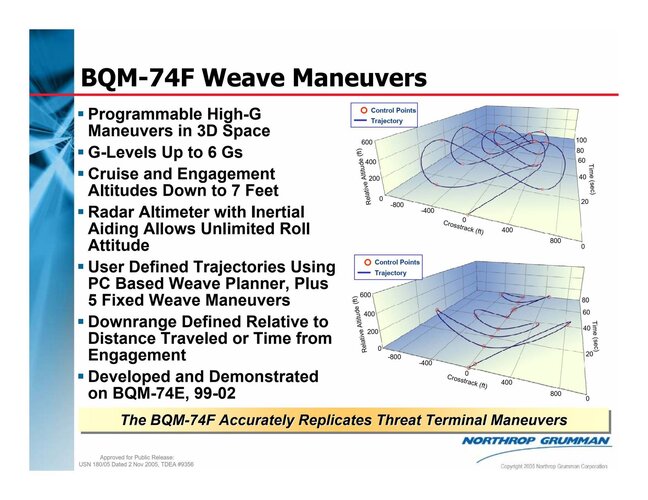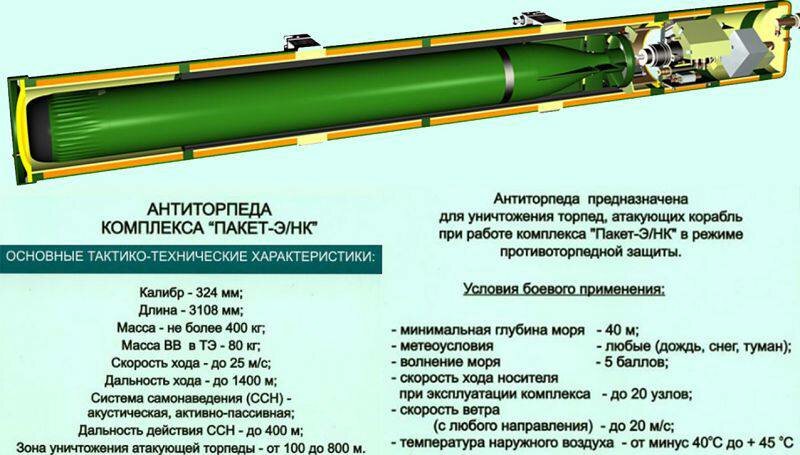It always bug me on how come there is still no operational anti torpedo torpedo. We are at the point where we can make ballistic missiles interceptor that can intercept warhead moving at 10-20 times speed of sound. We also have hard kill protection system that small enough to fit on a tank that can even intercept APDSFS round that moving at Mach 5. So what make intercepting a torpedo moving at barely 60-70 km/h so hard?. Some mentioned that because the speed of sound is much slower than speed of radiowave. So sonar can’t keep up with torpedo. However I found that hard to believe. Speed of sound in water is still 4-5 times that speed of sound in the air, and torpedo are extremely slow compared to missiles. The engagement time should be very long. Some other people has suggest that torpedo launch are very hard to detect. This seem some what more reasonable. However, given that we literally have active soft kill decoys against torpedo. If your sonar can detect torpedo to deploy soft kill countermeasure, then it would only make sense that you can deploy your hard kill one. And it is not like torpedo are easy to jam either. Wake homing torpedo were said to be unjamable
You are using an out of date browser. It may not display this or other websites correctly.
You should upgrade or use an alternative browser.
You should upgrade or use an alternative browser.
Why hard kill countermeasure against torpedo is so rare?.
- Thread starter Ronny
- Start date
Scott Kenny
ACCESS: Above Top Secret
- Joined
- 15 May 2023
- Messages
- 9,980
- Reaction score
- 11,484
Because you need to detect it early enough to get your anti-torpedo launched in time to intercept at a safe distance.
And that's not easy to do when it's coming at you at 65-80 knots and in the case of wake-homing torpedoes, not in a classic Constant-Bearing-Decreasing-Range collision course.
And that's not easy to do when it's coming at you at 65-80 knots and in the case of wake-homing torpedoes, not in a classic Constant-Bearing-Decreasing-Range collision course.
That seem extremely when we cosider that average hard kill protection system on MBT could react on the order of 0.5 milli second. Even if the torpedo is detected only 500 meters from the ship, that still about 24 seconds till impact, which is plenty of time to get your hard kill countermeasure to water. Torpedo is just extremely slow even when compared to subsonic cruise missileBecause you need to detect it early enough to get your anti-torpedo launched in time to intercept at a safe distance.

Big_Zukini
ACCESS: Restricted
- Joined
- 23 November 2024
- Messages
- 27
- Reaction score
- 25
Rafael markets its Torbuster as a combined soft-kill and hard-kill solution even though the described mechanism is a munition floating at a safe distance from the real submarine, employing some form of deception to lure a torpedo and detonate when it's close enough.
So again, as you described, it lets the torpedo get close to it and not the other way around.
I'm also curious why we have no "real" hard-kill solution that homes in on a torpedo.
1. Also, is wake-detection truly unjammable? Can't a decoy mimic that signature? Or is it too difficult?
2. Is it possible that a submarine's massive sonar is capable of detecting a torpedo, but a hard-kill munition's sensors would be unable to pick it up at a relevant distance? Is a submarine capable of communicating targeting data to said countermeasure, at depth, without alerting the torpedo itself to the real target?
So again, as you described, it lets the torpedo get close to it and not the other way around.
I'm also curious why we have no "real" hard-kill solution that homes in on a torpedo.
1. Also, is wake-detection truly unjammable? Can't a decoy mimic that signature? Or is it too difficult?
2. Is it possible that a submarine's massive sonar is capable of detecting a torpedo, but a hard-kill munition's sensors would be unable to pick it up at a relevant distance? Is a submarine capable of communicating targeting data to said countermeasure, at depth, without alerting the torpedo itself to the real target?
Big_Zukini
ACCESS: Restricted
- Joined
- 23 November 2024
- Messages
- 27
- Reaction score
- 25
Perhaps if we were to define a kill zone around a submarine, it would be possible to use its own sonar to actively guide a countermeasure onto a torpedo. Realistically, is such kill zone feasible? That is, is it feasible to consider a torpedo within 500m or any other set distance to be a guaranteed hit?That seem extremely when we cosider that average hard kill protection system on MBT could react on the order of 0.5 milli second. Even if the torpedo is detected only 500 meters from the ship, that still about 24 seconds till impact, which is plenty of time to get your hard kill countermeasure to water.
Of course, with the "set distance" being within reason and not "yeah when it's 10 meters away you're a goner".
I vaguely recalled reading somewhere that even a nuclear deep charge can’t damage a modern submarine from distance greater than 200 meters since modern submarine can withstand very high pressurePerhaps if we were to define a kill zone around a submarine, it would be possible to use its own sonar to actively guide a countermeasure onto a torpedo. Realistically, is such kill zone feasible? That is, is it feasible to consider a torpedo within 500m or any other set distance to be a guaranteed hit?
Of course, with the "set distance" being within reason and not "yeah when it's 10 meters away you're a goner".
Scott Kenny
ACCESS: Above Top Secret
- Joined
- 15 May 2023
- Messages
- 9,980
- Reaction score
- 11,484
The primary challenge is identifying the incoming as a threat to be engaged that is difficult, not seeing that there's a torpedo.That seem extremely when we cosider that average hard kill protection system on MBT could react on the order of 0.5 milli second. Even if the torpedo is detected only 500 meters from the ship, that still about 24 seconds till impact, which is plenty of time to get your hard kill countermeasure to water. Torpedo is just extremely slow even when compared to subsonic cruise missile
View attachment 758284
Although it's also hard to get sonar contacts inside the wake of a ship, that water is heavily disturbed and usually has a lot of air trapped in it. So not only is the wake giving poor passive contacts due to signal refraction as it passes through different water densities, it's also basically an ADC "alka-seltzer" noisemaker and just short of opaque to active sonar. But that just means you run a small towed array to get clear of the worst of the air bubbles.
Wake-homing torpedoes use an S shaped search pattern as they cross back and forth through the wake. That's a non-obvious attack pattern to a computer. Worse, the only things you see outside the wake is an intermittent contact as the torpedo pops out and turns back into the wake each time.
Depends on size of nuclear kaboom. 50kt ASROC or NDB, sure, 250kt SUBROC, not so much.I vaguely recalled reading somewhere that even a nuclear deep charge can’t damage a modern submarine from distance greater than 200 meters since modern submarine can withstand very high pressure
Big_Zukini
ACCESS: Restricted
- Joined
- 23 November 2024
- Messages
- 27
- Reaction score
- 25
fr? I didn't know that. Very interesting, thank you!I vaguely recalled reading somewhere that even a nuclear deep charge can’t damage a modern submarine from distance greater than 200 meters since modern submarine can withstand very high pressure
That S-shaped search pattern just seem like normal terminal weaving maneuver of anti ship missile, it doesn’t seem that hard to identify as threat. Besides, torpedo still take extremely long till impact compared to antiship missile, I would think that even if the computer doesn’t automatic identify the torpedo as threat, we can still have man in the loop decisionThe primary challenge is identifying the incoming as a threat to be engaged that is difficult, not seeing that there's a torpedo.
Wake-homing torpedoes use an S shaped search pattern as they cross back and forth through the wake. That's a non-obvious attack pattern to a computer. Worse, the only things you see outside the wake is an intermittent contact as the torpedo pops out and turns back into the wake each time.


Dilandu
I'm dissatisfied, which means, I exist.
Well, they aren't. Soviet & Russian Navy have hard-kill anti-torpedo defenses since 1960s. The RBU series autoloading depth charge throwers in later models (RBU-6000, RBU-12000) were designed mainly against torpedoes, not submarines. A specific models of decoy and barrier rounds (i.e. floating mines with proximity fuzes) were developed to atop torpedoes; later, the homing depth charges (that could adjust their water trajectory, during sinking) were deployed.
As far as I could conclude, the West made a major mistake in 1960s stopping the hard-kill torpedo defense defelopment out of assumption that "in any future war, any torpedo launched would likely be nuclear-tipped, and not require direct hit". So the hard-kill defenses, based on delth charge throwers, were deemed inefficient. All attention was concentrated on decoys and acoustic camouflage.
USSR, on the other hand, assumed that conventional-armed torpedoes would still be the most commonly used ones. And thus continued to work on hard-kill defenses.
As far as I could conclude, the West made a major mistake in 1960s stopping the hard-kill torpedo defense defelopment out of assumption that "in any future war, any torpedo launched would likely be nuclear-tipped, and not require direct hit". So the hard-kill defenses, based on delth charge throwers, were deemed inefficient. All attention was concentrated on decoys and acoustic camouflage.
USSR, on the other hand, assumed that conventional-armed torpedoes would still be the most commonly used ones. And thus continued to work on hard-kill defenses.
Last edited:
Dilandu
I'm dissatisfied, which means, I exist.
Basically the fact that water is dense. It's much less suited for rapid maneuvering than air or vacuum. The counter-torpedo did not have much dynamic advantage over torpedo; at best, it marginally faster and more maneuverable. And sound is not as precise as radar, especially at short distances. The inevitable inaccuracies in pinpointing the torpedo position coupled with inadequate differences in mobility make counter-torpedo a lousy proposition.It always bug me on how come there is still no operational anti torpedo torpedo. We are at the point where we can make ballistic missiles interceptor that can intercept warhead moving at 10-20 times speed of sound. We also have hard kill protection system that small enough to fit on a tank that can even intercept APDSFS round that moving at Mach 5. So what make intercepting a torpedo moving at barely 60-70 km/h so hard?.
Scott Kenny
ACCESS: Above Top Secret
- Joined
- 15 May 2023
- Messages
- 9,980
- Reaction score
- 11,484
The problem is that it ends up as an intermittent contact.That S-shaped search pattern just seem like normal terminal weaving maneuver of anti ship missile, it doesn’t seem that hard to identify as threat. Besides, torpedo still take extremely long till impact compared to antiship missile, I would think that even if the computer doesn’t automatic identify the torpedo as threat, we can still have man in the loop decision
Your sonar sees it, loses it into the wake, it shows up on the far side of the wake, it disappears again, it appears again on the near side of the wake, it disappears again, it reappears on the far side of the wake, ... etc ad kaboomium.
But the wake vollume is small right?, can’t you just lobs some depth charge into the wake for it to go kaboom?The problem is that it ends up as an intermittent contact.
Your sonar sees it, loses it into the wake, it shows up on the far side of the wake, it disappears again, it appears again on the near side of the wake, it disappears again, it reappears on the far side of the wake, ... etc ad kaboomium.
Scott Kenny
ACCESS: Above Top Secret
- Joined
- 15 May 2023
- Messages
- 9,980
- Reaction score
- 11,484
Maybe? Those may not destroy a torpedo. Plus, the US hasn't used depth charges since the 1950s. Well, at least not conventional depth charges. Nuclear ones lasted until about 1991, in ASROC, SUBROC, and the B57 nuclear bomb.But the wake vollume is small right?, can’t you just lobs some depth charge into the wake for it to go kaboom?
How about lobing a Mark 46 or 54 into the wake? Seem doable at leastMaybe? Those may not destroy a torpedo. Plus, the US hasn't used depth charges since the 1950s. Well, at least not conventional depth charges. Nuclear ones lasted until about 1991, in ASROC, SUBROC, and the B57 nuclear bomb.
Technically speaking, wouldn’t dense medium is easier to perform tight maneuver?. After all missile and aircraft can turn much tigher at low altitudeBasically the fact that water is dense. It's much less suited for rapid maneuvering than air or vacuum. The counter-torpedo did not have much dynamic advantage over torpedo; at best, it marginally faster and more maneuverable. And sound is not as precise as radar, especially at short distances. The inevitable inaccuracies in pinpointing the torpedo position coupled with inadequate differences in mobility make counter-torpedo a lousy proposition.
Scott Kenny
ACCESS: Above Top Secret
- Joined
- 15 May 2023
- Messages
- 9,980
- Reaction score
- 11,484
Expensive and a lot more weapon than you need for the job. A ~6" unit the size of external ADC countermeasures is what they kinda settled on.How about lobing a Mark 46 or 54 into the wake? Seem doable at least
(Also, arguably the Mk46/50/54 lightweight torpedoes are the ultimate form of depth charges.)
What is ADC?Expensive and a lot more weapon than you need for the job. A ~6" unit the size of external ADC countermeasures is what they kinda settled on.
Actually, about that, has Mk46/50/54 ever score direct hit on torpedo?.(Also, arguably the Mk46/50/54 lightweight torpedoes are the ultimate form of depth charges.)
On a side note, can CAPTOR mine be programmed to hit a surface ship? Or is it purely anti submarine weapon?
Scott Kenny
ACCESS: Above Top Secret
- Joined
- 15 May 2023
- Messages
- 9,980
- Reaction score
- 11,484
Acoustic Device Countermeasure, the version I'm talking about is basically a giant alka-seltzer tablet, makes a big cloud of bubbles to reflect active sonar. And the bubbles popping makes noise for passive sonar, but it's primarily for active sonar.What is ADC?
You kick one or two of those out and they hang in the water while you get the ship behind the bubble cloud. Ideally pop those off on one side of a thermocline and get the ship on the other side, at least for subs.
Other ADCs have battery operated noisemakers instead of the bubble cloud, to confuse passive sonar.
Not sure it's ever been tested. But I've seen a picture of a Mk46 (I think) trying to take out a hovering helicopter! It accidentally locked onto the helo, and got itself a good 3 weapon lengths out of the water.Actually, about that, has Mk46/50/54 ever score direct hit on torpedo?.
Probably could be, but a 12.75" torpedo is such a small warhead (~150lbs TNT equivalent) that it wouldn't be very effective against a large warship. It'd likely be effective against an OPC or a merchant ship, though. Try to crack the keel of the OPC, pop the shaft seals on the merchant ship.On a side note, can CAPTOR mine be programmed to hit a surface ship? Or is it purely anti submarine weapon?
Heavyweight 21"/53cm torpedoes have on the order of 1000lbs TNT equivalent, and if there's any of the monster 65cm torpedoes left those had a 1500lb or 1750lb TNT equivalent warhead. BIG badaboom.
Dilandu
I'm dissatisfied, which means, I exist.
Not exactly. Dense medium made control surfaces more efficient & increase lifting force, true. But it also present a major resistance to the turn.Technically speaking, wouldn’t dense medium is easier to perform tight maneuver?. After all missile and aircraft can turn much tigher at low altitude
Dilandu
I'm dissatisfied, which means, I exist.
Which was a mistake, by the way. A good salvo of depth charges may not kill the torpedo, true - but its significantly better than doing nothing at all. Especially against wake-homing ones.Maybe? Those may not destroy a torpedo. Plus, the US hasn't used depth charges since the 1950s.
Ainen
I really should change my personal text
- Joined
- 25 August 2011
- Messages
- 968
- Reaction score
- 1,190
Paket-E, Lasta-E.It always bug me on how come there is still no operational anti torpedo torpedo.
Seem like Russia take the torpedo threat a lot more serious than NATOPaket-E, Lasta-E.
Ainen
I really should change my personal text
- Joined
- 25 August 2011
- Messages
- 968
- Reaction score
- 1,190
Being mostly on a wrong side of detection game helps, I guess.Seem like Russia take the torpedo threat a lot more serious than NATO
Both are widely deployed as well.
Similar threads
-
Why there isn't any anti ship missile with torpedo warhead?
- Started by Vanessa1402
- Replies: 83
-
-
Distant Thunder / NetSAT littoral water system (DARPA)
- Started by Grey Havoc
- Replies: 2
-
-


